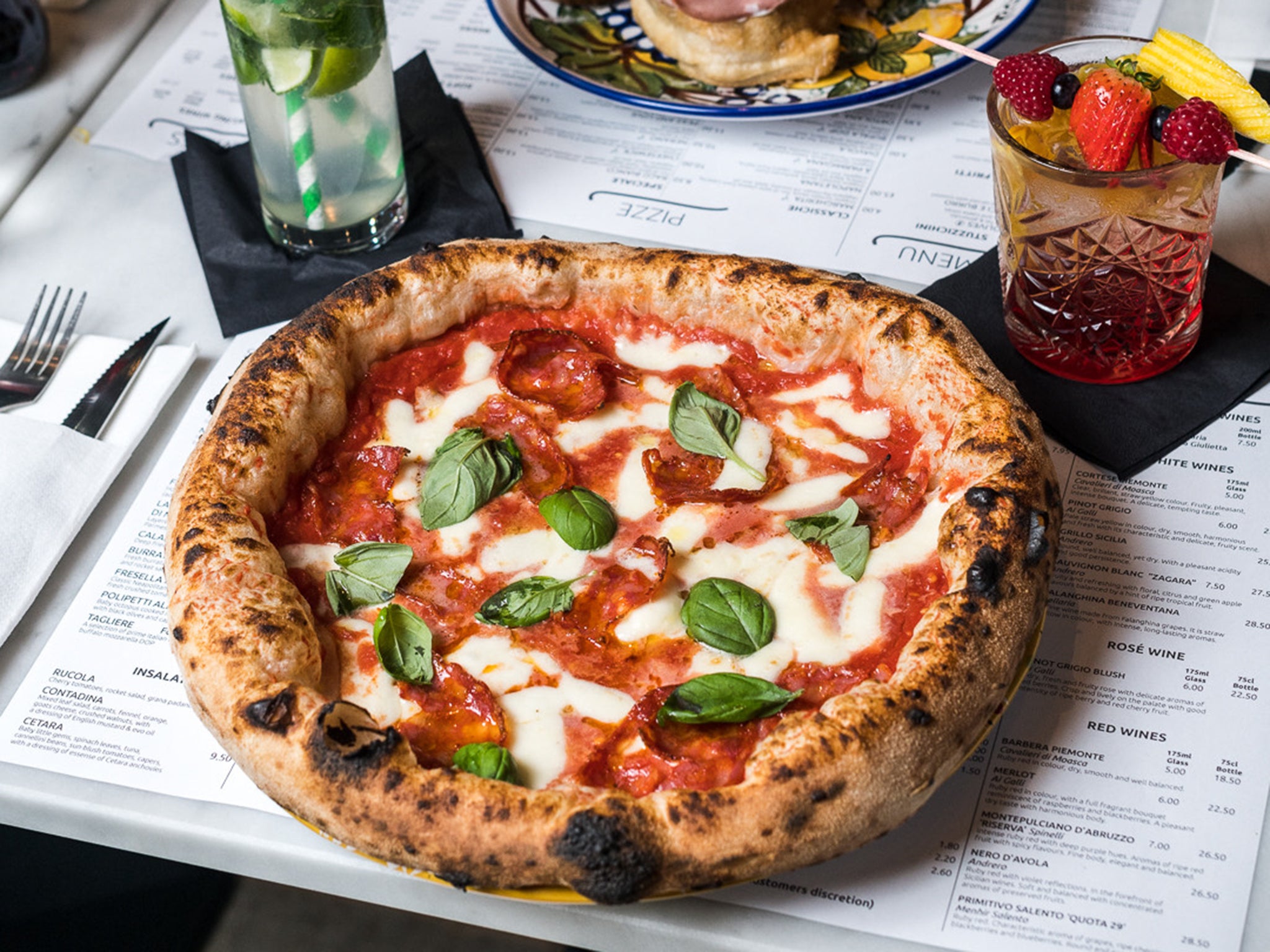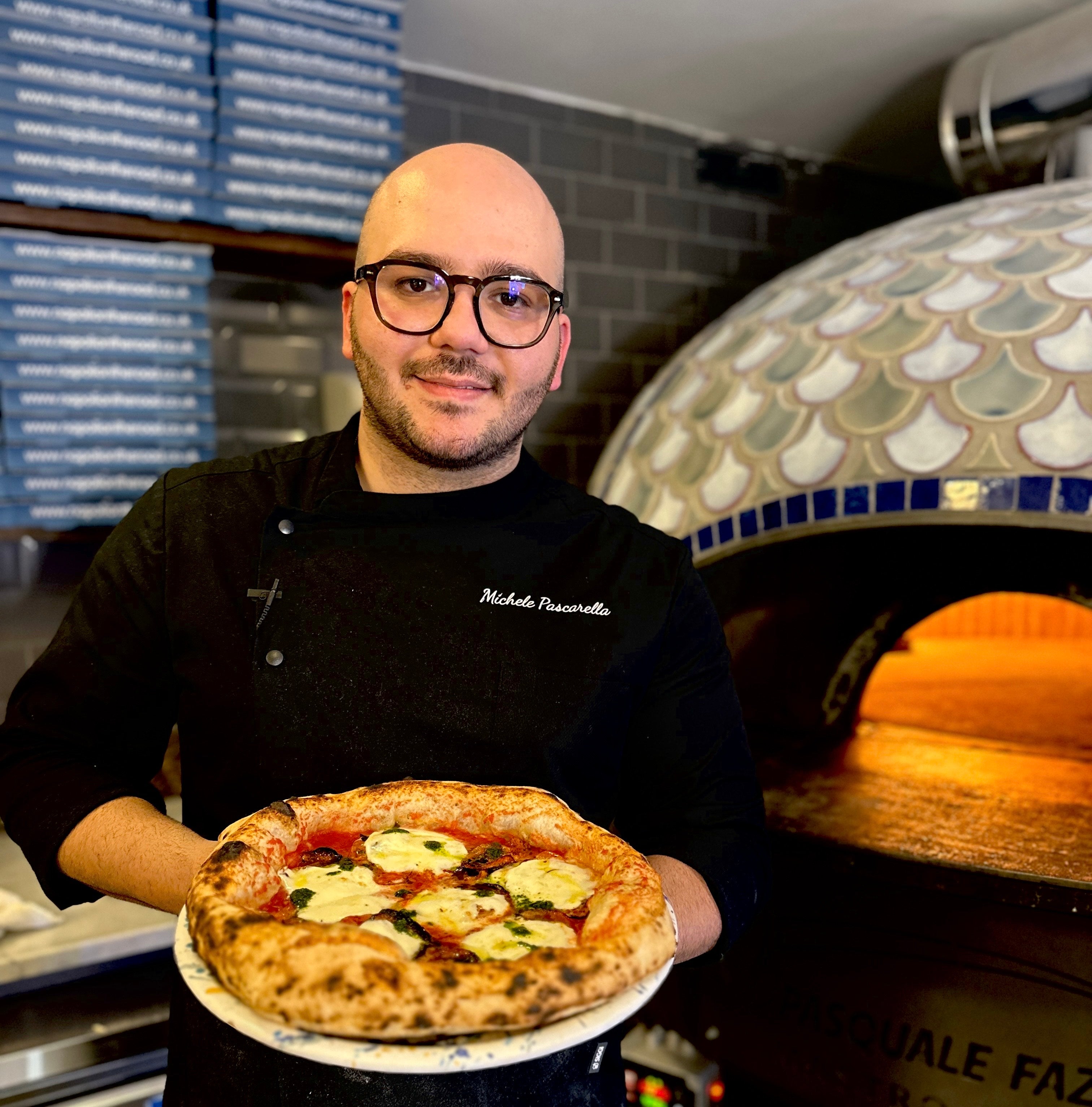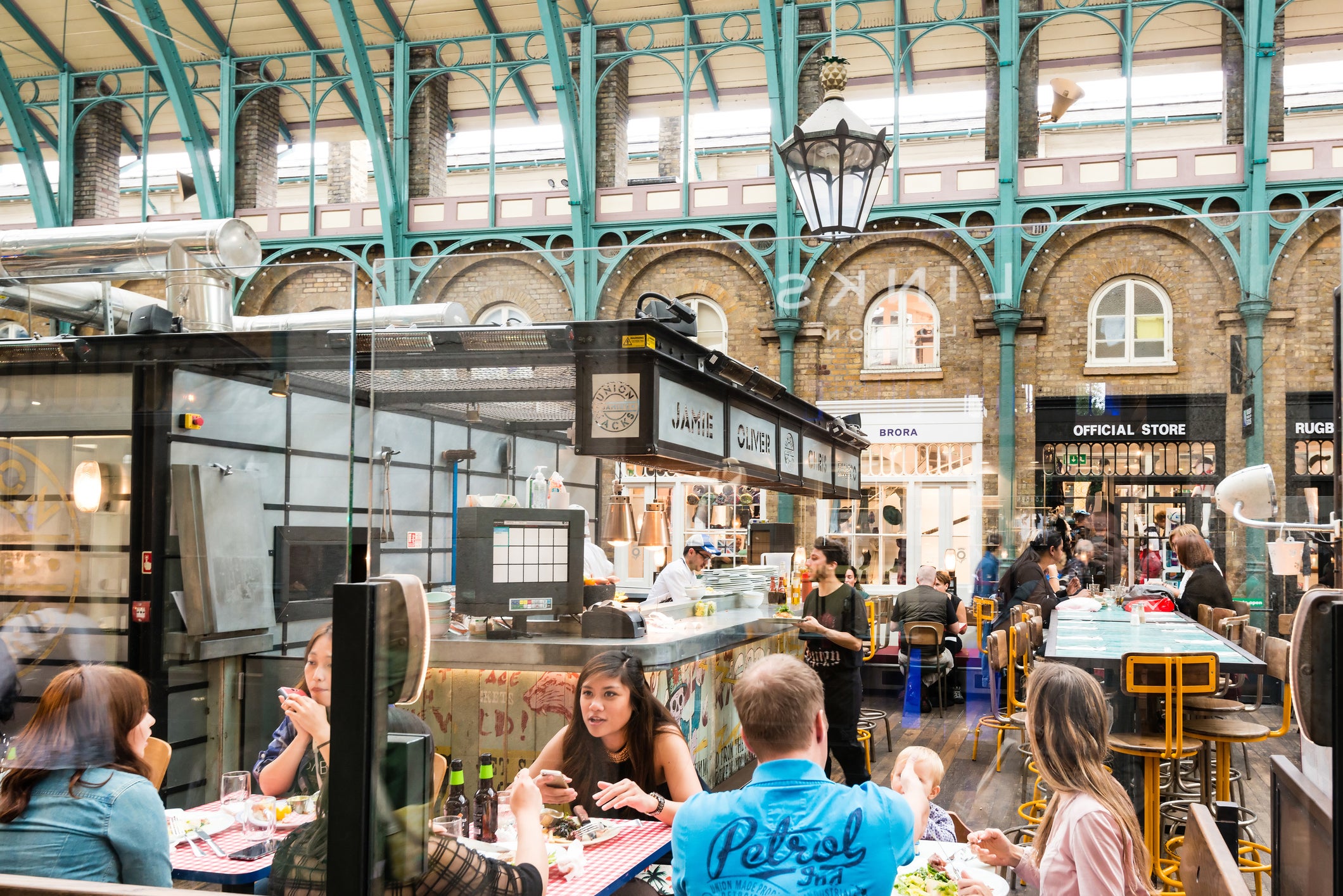Is there such a thing as British pizza?
If you can have a Neapolitan, New York or Tokyo pizza, why not a classic piece of pie from Glasgow, Huddersfield or Manchester? As a Chiswick restaurateur is crowned Pizza Maker of the Year, Clare Finney speaks to the foodies adding a slice of life to the British pizza scene

In 2011 in Covent Garden, the then indefatigable Jamie Oliver launched his latest restaurant, Union Jacks, with the aim of creating a British breed of pizza. “Did he really need to?” asked Lisa Markwell in this very paper. Oliver had rebranded them as “flats” and unsuccessfully topped them with an array of British produce, including Lincolnshire Poacher cheddar, wild mushrooms, Old Spot pig, quince, Bramley apples and Colston Bassett stilton.
“Pizza doesn’t need reinventing, being one of the world’s most loved, perfectly assembled dishes,” the review continued. Fast forward 12 years, and not everything’s changed. Jamie Oliver is still opening a restaurant in central London; pizza is still one of the world’s favourite foods. But the concept of British pizza, once a contradiction in terms, is no longer as preposterous as it once was.
On the contrary, it is bang on trend. Just this week, Michele Pascarella, founder of Napoli on the Road in Chiswick, won the illustrious Global Pizza Maker of the Year 2023. His menu includes a “Cheesewick” made with cherry tomato ham and dry blue stilton. “Winning the global title of Pizza Maker of the Year is a dream come true for me, but the award is also about putting British pizza on the global map,” he tells The Independent.
Elsewhere, in a market in Manchester, Honest Crust is topping its British-grown sourdough bases with British ewe’s cheese and fresh, seasonal corn. In a pub in Hammersmith, London, the third-generation owner has created a pizza that is “not Neapolitan, not New York, but entirely its own thing”, GQ magazine wrote recently. For the past month, east London’s Yard Sale pizzerias have been teaming up with Tayyabs, a Punjabi restaurant and neighbourhood institution, to create pizza with Karahi lamb keema. “I don’t know if the terminology is there, but in terms of actually existing, I think British pizza is something that’s already happening,” says Jimi Famurewa, longstanding restaurant critic.
So why have these pizzerias succeeded where Jamie didn’t? And what – if anything – defines a British pizza? That term isn’t yet used in the same context as a Neapolitan, New York, Detroit or Tokyo pizza – but that doesn’t preclude British pizza being something in its own right. The examples cited above all showcase something of their surroundings, either through seasonal, local ingredients or through a cuisine that isn’t traditionally “British” but, thanks to the multicultural fabric of our cities is integral to that community, be it Polish, Greek or Ghanaian.
It is culturally fair game, then, having become so assimilated into America, that we’re as likely to think of the States as Italy when we think of pizza. So definitively have Chicago, Detroit and New York made pizza their own, their takes have been exported around the world, where they are considered almost as traditional as the styles from Naples and Rome. “We owe Italy everything, because it is the historic home of pizza,” says Jim Morgan of Anello Pizza in Huddersfield – but Italian’s cultural ownership has been limited ever since “pizza was exported back to Italy in the style of New York pizza”.
“I don’t have any Italian heritage, but I feel that I own our pizza now we have developed a recipe that is not comparable to Italian pizza,” agrees Roly Simpson of East Pizza in Edinburgh. “The American pizza scene is founded on Italian immigrants taking ownership of something and making it their own in their new home.” If his dough is made with British flour and Scottish water and naturally proven for 72 hours, and the base then topped with Scottish mozzarella and charcuterie from Great Glen Charcuterie, why isn’t it Scottish sourdough pizza?

Historically, pizza has been a food informed by the environment that surrounds it. In Naples, regarded as pizza’s birthplace, the regulatory body for Neapolitan pizza, the Associazione Verace Pizza Napoletana, insists upon tomatoes from nearby Mount Vesuvius, buffalo mozzarella from the marshlands of Campania, and from nearby Lazio, Neapolitan yeast. Outside of Naples, no strict laws apply – but most genres express their environment. New York pizza is sold in slices “to go”; Detroit pizza was forged in deep pans that were originally from local car factories, and smothered with highly processed “brick” cheese from Wisconsin. “So if things that are very specific to Yorkshire are going into my pizza, does that make it a Yorkshire pizza?” asks Morgan, who in October plans to do just that.
The funny thing is, the pizza movement we’re seeing now is as much a reaction to Neapolitan pizza as it is informed and inspired by it. After years of pizza being either a chain, a checked-tablecloth, wine-bottles-as-candlestick-holders affair, or a late-night carb-crash topped with everything from kebabs to spaghetti, “Neapolitan was held up as serious pizza – the only ‘proper’ pizza, which was really stripped back”, says Famurewa.
Back when Simpson looked into setting up a pizzeria, people were obsessed with Neapolitan. “But it didn’t make sense to me, because the whole idea of Neapolitan pizza was that you’d source everything from within a 30-mile radius,” he argues. By importing San Marzano tomatoes, buffalo mozzarella from Campania and flour from Italy, these British-based pizzerias were true to the letter of Neapolitan pizza – but to be true the spirit of it, “you’d ideally source stuff from 30 miles of where you were”.
Of course, 10 years ago that was less possible than it is now. British cheese and charcuterie makers and, crucially, wheat farmers and millers were not as skilled back then. And as Oliver found when Union Jacks closed in 2017, if one is to play around with pizza, quality is king. Perhaps that’s why he called them “flats”, reflects Famurewa. “If you take the term pizza away, it can be what you want it to be, without inviting the wrath of furious Italians.”
Yet today, with the high quality of British flour, and dairies making fresh mozzarella from local milk, our pizza has the necessary foundations to appeal to good chefs, and for those chefs to go wild, without seeming gimmicky. “England has so many lovely farms that deliver high quality produce and vegetables,” observes Pascarella. “In the past couple of years, I’ve seen lots of Brits that want to learn more about pizza in general and put their unique spin on it.”
I don’t know if the terminology is there, but in terms of actually existing, I think British pizza is something that’s already happening. Pizza as a reflection of the surrounding environment? We are seeing more and more of that
In short, it’s all down to the dough. “That’s been quite a shift,” says Richard Carver, co-founder of Honest Crust. “For a couple of years pizzerias were really behind the bakeries. Now more and more are dialling into the heritage grain movement, using British grains. They’re more readily available than they were.” At 400 Rabbits in south London, where the flour hails from the Cotswolds, the water from the Thames and the dough is proved over three days. “It’s an entirely British product – right down to our starter, which is literally born out of the air,” says Daniel Edwards, the pizzeria’s co-founder. This has given the pizza chefs – and they are regarded in the same light as chefs, these days – licence to be more creative. “It’s like an insurance policy,” says Famurewa. “It’s a flavoursome, technically excellent thing made with care and love, which is always going to be popular – so it’s fine to go a bit mad.”
And mad 400 Rabbits have gone, with pizzas that celebrate not just local produce, but South London’s heterogeneous food scene. When we speak, they’re adding beer from their local brewery to crème fraiche for a white base pizza. In the past, they’ve collaborated with the producer of Tunisian harissa, Spanish restaurant Brindisa (the founder Monika Linton lives nearby) and beloved south London Thai restaurant Greedy Khao. “That’s what makes London, London for us. It has cultures from everywhere. We’ve decided to run with that,” Edward continues. Is it British pizza? “It’s certainly London pizza. We use our pizza as a foil for showing what’s going on in London, and what we love.”
“This is something that sets us apart from Italy,” says Carver. “There isn’t a dogmatic approach. We’re not worried about straying too far in incorporating food from different cultural backgrounds into our pizza.” Even Pascarella agrees: “British pizza deserves a seat at the table because it’s a delicious fusion of tradition and innovation.” After all, by the time you’ve taken a pizza out of a pizzeria, put it into a pub, brewery or railway arch and replaced Italian cheese and flour with British cheese and flour, the gloves of authenticity are off.

Which brings us to what pizza practically is: a flatbread for showcasing different produce, cuisines and, ultimately, places. Jamie might have flown the flag a bit prematurely with Union Jacks, but he was clearly onto something with British pizza. Perhaps what he missed – beyond an apostrophe and the confidence to call his pizzas, pizzas – was the multicultural inspiration that, more than anything, seems to define what that could be going forward.
Napoli on the Road’s latest award is really just a sign of things to come. “When we combine [the] curiosity to learn more about the art of pizza making with seasonal ingredients, the English scene will continue to grow and thrive,” says Pascarella. I think we’re a few years off British pizza entering the canon of terminology, but if anything unites and defines the people behind British pizza, it is their commitment to sourcing quality produce, local where possible – and to doing whatever they want.
Clare’s top five British pizzas
1. Cheeswick from Napoli on the Road, London, £15.95
Britain meets Italy by way of buffalo mozzarella, dry blue stilton, homemade cherry tomato jam and straccietella. Topped with a salty scattering of parmigiana reggiano chips.
2. Neal’s Yard Dairy 4 Cheese from Homeslice, London, £28
Four cheeses (they change seasonally) from beloved British cheesemongers Neal’s Yard Dairy, topped with jalapeno salsa, scattered with crunchy rye crumbs and drizzled with homemade garlic oil.
3. Trealy Farm Pepperoni from Anello Pizza, Huddersfield, £12.50
A classic mozzarella and tomato base topped with pepperoni from local Trealy Farm and finished with basil.
4. Cavolo Nero pizza from Flint Pizza, Newcastle, £12
A cavolo nero is blitzed and spread across a simple pizza base, topped with sliced red onion, almond milk ricotta and aleppo pepper. A good one for the vegans.
5. Wood roasted corn pizza from Honest Crust, Manchester, £12.50
Fresh, wood oven roasted corn crowns a creamy, cheesy white base of mascarpone, mozzarella and British ewes cheese, spiked with chilli, basil and sea salt.
Join our commenting forum
Join thought-provoking conversations, follow other Independent readers and see their replies
Comments


Bookmark popover
Removed from bookmarks